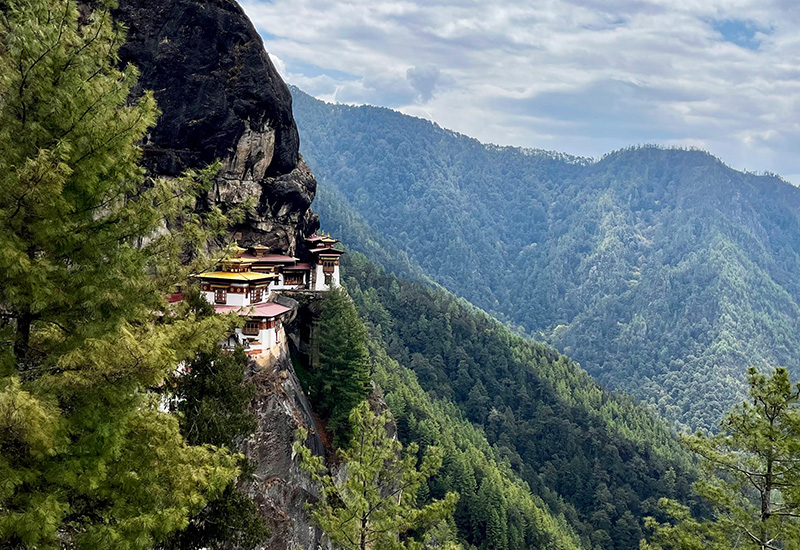Bhutan is like no other place you will ever visit, or as my husband says, Bhutan is just a bit different.
I am in love with Portugal, and most of my travel articles will highlight the many hidden gems we are lucky enough to have on our doorstep, but every now and again, it is good to look further afield, particularly for that ‘once in a lifetime’ trip (well maybe twice…). Bhutan is quite a bit further afield – the only flights into Paro leave from Delhi, Bangkok, Nepal and Singapore. We flew from London with a direct flight from Delhi but Delhi, Singapore and Bangkok are quite easily reached from Lisbon with Emirates with a quick connection in Dubai, so it is very feasible.
Just getting to Bhutan is an adventure in itself. We flew via Delhi, a busy, bustling, exhilaratingly frantic place that was the exact opposite of the vibe we were heading for. Instead of sleeping through jet lag and time zone adjustments, we spent half a day on a tour of New Delhi with a personal guide – Mr Singh. Although it was mostly a whistle-stop tour of the great sights, we also spent an hour in a temple learning about Sikhism and its unique approach to community work – including a fascinating behind-the-scenes tour of kitchens and communal dining rooms. Delhi was a vibrant and beautiful assault on the senses – it left us wanting to book another trip!
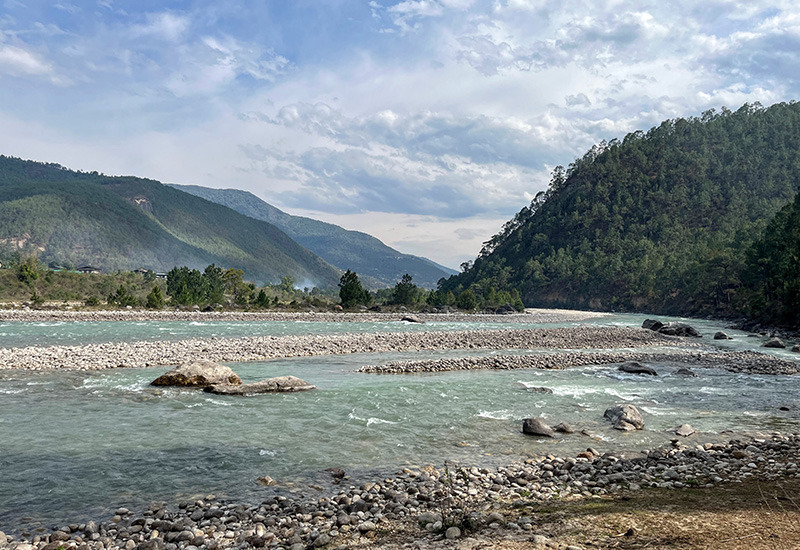
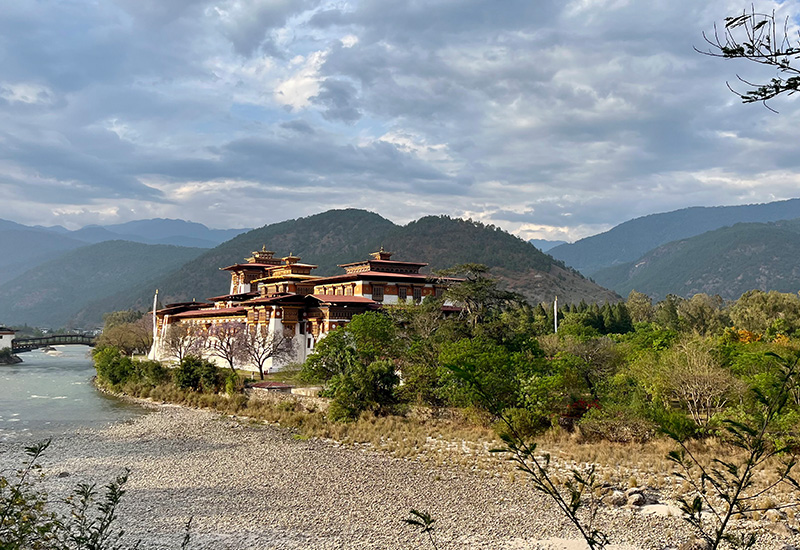
Flying to Paro airport is another noteworthy amuse-bouche to the Bhutan experience. After a short stop at Kathmandu, the Nepalese capital, the flight passes across five 7K+ Himalayan giants, including Everest. We were lucky – clear skies and pre-selecting the right seats on the plane ensured we spent about 20 mins of the short flight collecting our jaws from the floor. The approach into Paro is notoriously tricky for pilots to navigate. Only eight pilots in the world are certified to land there – we simply admired the unusual sight of fields and hillside at eye level as you come in to land. The effect is strangely emotional, and many of our fellow passengers were having a moment of spiritual delight on the tarmac (or maybe it was the sheer relief of having made it!)
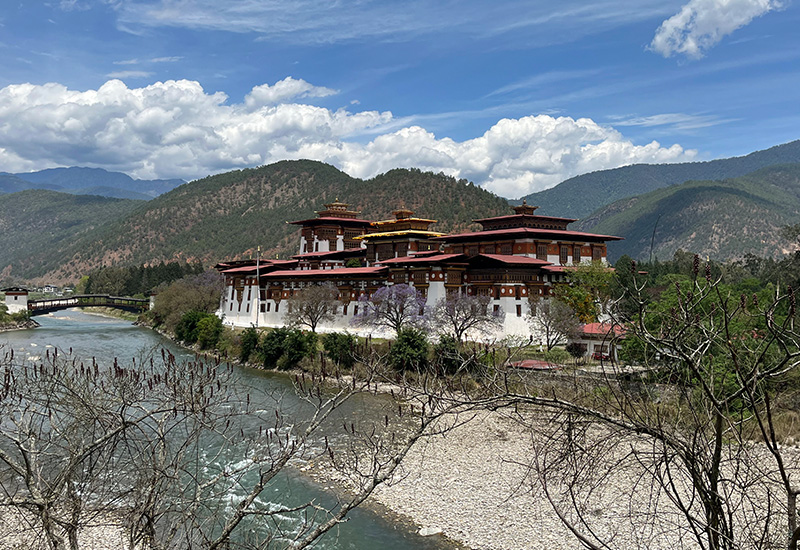
Bhutan is a small kingdom in the Himalayas, wedged between India and China, and with a culture and approach to tourism wholly its own. It has resisted modernisation for most of the 20th century, focusing on ‘gross national happiness’ instead of industrialisation and technology. Buddhism, Bhutan’s state religion, infuses everything, and the influence of its king and royal family looms large – in temples and roadside signs. There is no ‘global swarming’ or ‘surtourisme’ here: accessibility and relatively high visa cost ensure that overall tourist numbers are low, and profits are invested in sustainability and maintaining the Bhutanese way of life.
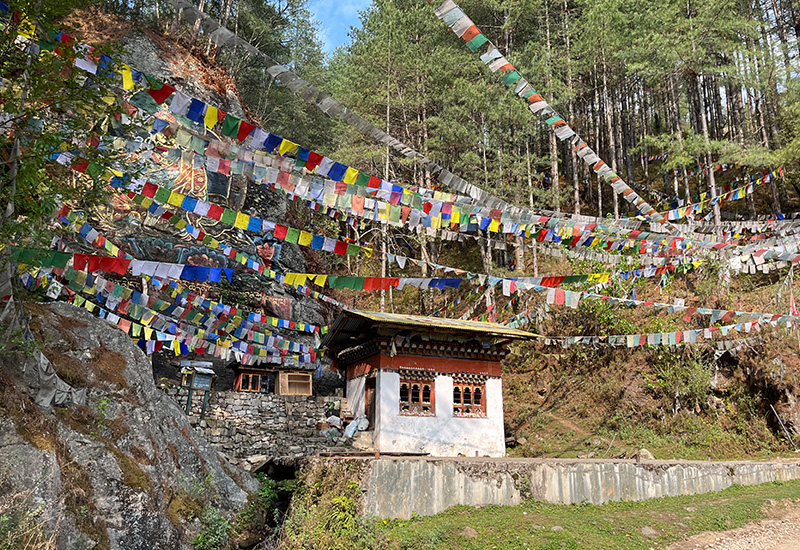
We did a seven-day tour with our amazing and super knowledgeable private guide Kencho and driver, which gave us the opportunity to see not just the surface glamour of incredible landscapes and culture but to get underneath the skin of this unique place. ‘Unspoilt’ is probably the most overused phrase in the travel and tourism business, but Bhutan comes closer than anywhere else I have seen. The first two days, part of you is thinking, “Okay, this is all great, but I am sure you are just showing us the pretty bits.” And then you realise there are no light industrial estates, motorways or even trains – the whole place is just like this: temples, hills, gorgeous local houses and dzongs (a dzong is a distinctive type of fortified monastery architecture mainly found in Bhutan and Tibet). Time and history are different here: Kencho would talk about that thing that happened in the 8th century as if it was literally yesterday.
The tension between the old ways (TV was only officially introduced here in 1999) and the modern world is, of course, increasing, and the little black rectangles in everyone’s pocket are changing things here as well. On our first walk through Thimphu, we noticed groups of teenage girls going through a strangely similar and familiar ritual – they were recording TikTok routines in much the same way our teenage daughter did a few years ago. Walking back from a temple visit where we marvelled at young monks studying ancient scrolls, we came across those very same teenagers laughing and goofing around on video calls and social media as they walked into the village below.
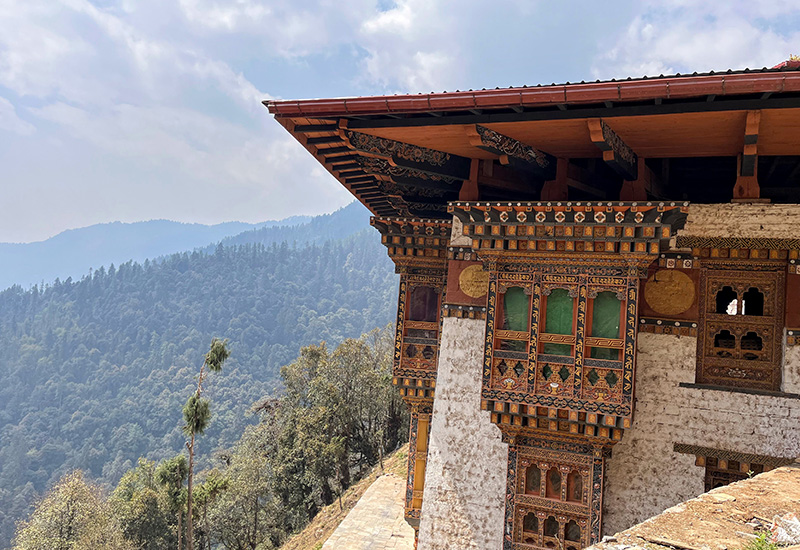
Our first night was at the Druk Hotel, which was charming, comfortable and had an excellent restaurant. Bhutanese food is great and different from Indian or Chinese traditions. Pesticides are banned, and small-scale farming produces simple and delicious produce that feels very close to home. Special mention goes to momos, fat dumplings filled with veg. As an aside, you can visit one of the many Nepalese restaurants in Portugal to get a good approximation of Bhutanese cuisine …
Unless you are into birdwatching (we met several tour groups who were), the main activities in Bhutan are hiking and temple visits. By design, most temples are at the top of hills and (smallish) mountains, so the two go hand in hand. Before we left, we were a bit apprehensive about the amount of walking and the higher altitudes, but in reality, anyone of moderate fitness can easily enjoy the amazing valleys, forests and mountain paths. We never ventured much above 3000m Momo – if mountaineering is your thing, Nepal will probably be more your speed.
The pictures from this trip tell the story better than I can in this article. From the monasteries of Taktsang, Cheri and Gangtey, the dzong and the ‘divine madman temple’ at Punakha, nature walks through Phobjikha valley and innumerable stupas, iron footbridges, white flags and prayer wheels, it was all so beautiful and authentic in a way that is hard to describe – except to say that I can still see, smell and taste the spirit of Bhutan months after our trip.
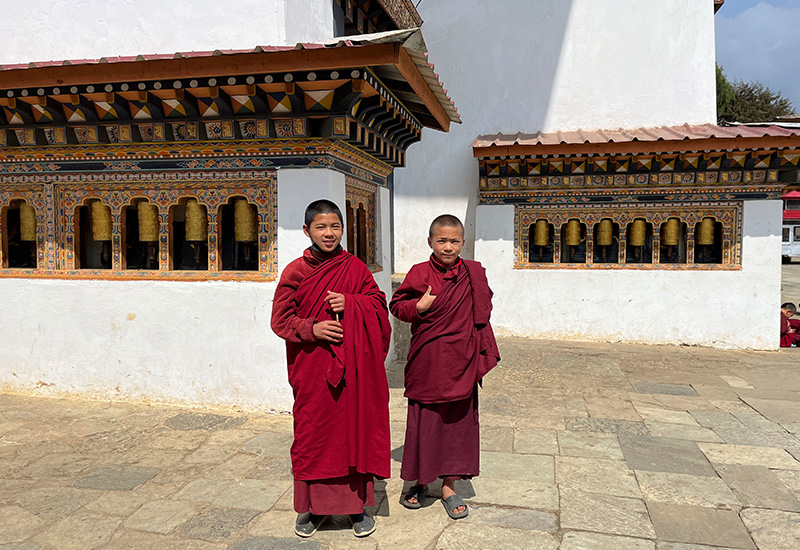
The crowning glory of any Bhutan trip is the walk up to Taktsang, or Tiger’s Nest, a monastery of preposterous beauty at the top of a 3200m forest trail, a stunning two-hour hike up the mountain with about 950 steps at the end. A pilgrimage site for Buddhists, it is the kind of place that is special, whichever god you believe in. Walking back into the valley, we were a bit giddy and lightheaded from the combination of exertion, awe and sense of achievement, ready to relax and unwind from a very intense and special week of adventures.
As luck (or an organised travel planner) would have it, I had booked us into the Bhutan Spirit Sanctuary in Paro for our two last nights. During our trip, we stayed in a range of three and four-star hotels and guesthouses, and all of them were good to great. The Bhutan Spirit Sanctuary was exceptional: a five-star hotel with delicious gourmet food, wonderful views, and a spa with a difference. We were prepped for our final climb to Tiger’s Nest with herbal tea, which might help with altitude sickness (reader, it worked!), but the main attraction was the hot stone bath afterwards. A cross between a sauna and a very, very hot bath, it uses menchu, which means medicinal water and consists of fresh water and Artemisia absinthium (wormwood) leaves. The combination is heated with river stones that have been roasted over a fire until they are burning hot. It was an incredibly effective way to soothe sore muscles and relax our overstimulated senses.
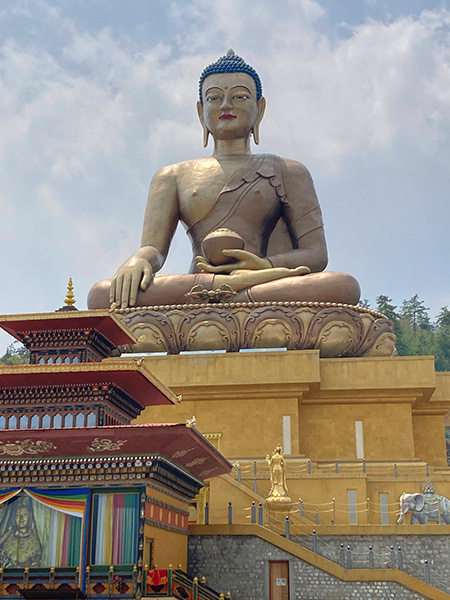
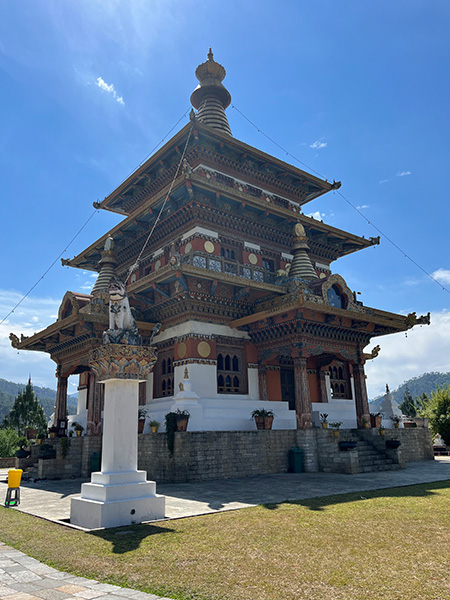
Bhutan is not easy to get to, and you will need to put your walking boots on, but, as so often, accessibility is a trade-off for quality of experience. It is so worth it, and I can honestly say that our Bhutan trip will remain with us for a long time.
Ann is a personal travel planner who can help organise and book the trip of a lifetime, a weekend away and everything in between.
